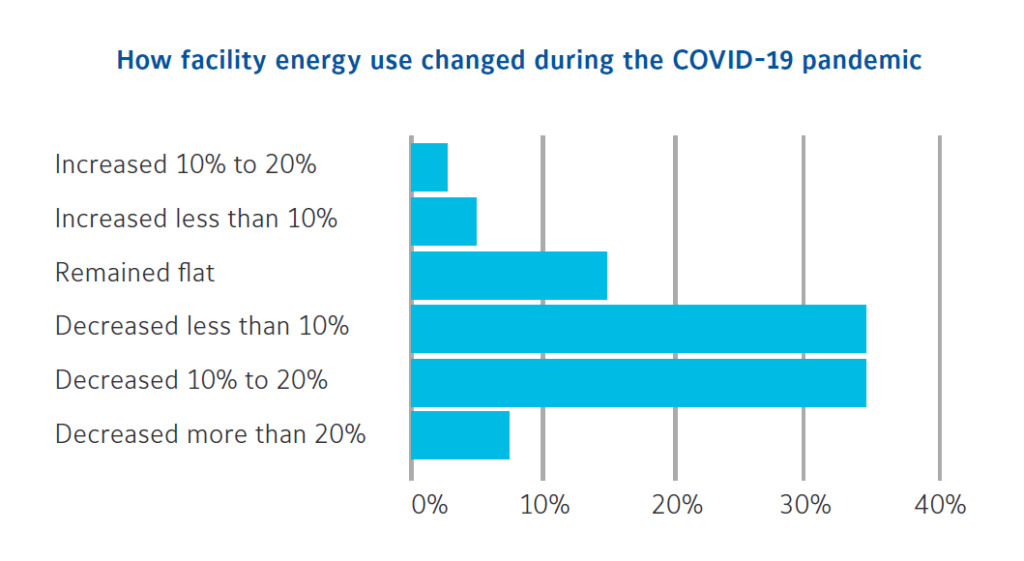Real estate in the U.S. and around the world is experiencing an astronomical disruption that will reshape the future of buildings, how they are built, operated and occupied for the foreseeable future. As 2020 comes to a close, there is still robust debate about how to revive and potentially re-imagine commercial real estate, but in leased space one thing is certain: lease terms will likely determine if and how these solutions will be implemented. As the binding agreements between landlords and tenants, leases will reveal the priorities of both parties and incentivize or discourage action in three critical areas: tenant uncertainty, building operations, and climate change. This post explains why traditional leases aren’t working, and why green, high-performance leases are becoming the new standard.
The future of real estate demands flexibility
With coronavirus cases rising again and winter likely to exacerbate the pandemic, reviving tenant occupancy is going to remain a challenge for many months to come. Remote work is the new normal, and it’s unclear if the shift is permanent. Many companies are considering more virtual work and shifting from large centralized offices to smaller ones distributed across cities and regions; REI has already announced a plan to sell its headquarters. Some smaller markets and city suburbs may benefit from this decentralized model, but downtown commercial real estate in major cities could be left reeling. To compete in this renter’s market, many real estate companies will need to adjust leases to reflect tenant priorities, which include a safe indoor environment, lower overhead costs and greater sustainability commitments. This calls for a different type of lease, with more flexibility and transparency for both parties.
Traditional leases are inefficient
Over the past nine months, it’s also become evident that traditional leases are a major barrier to lowering building operating costs.

Building owners and operators were bound by leases to maintain the same temperature standards as when the buildings were occupied, and often faced barriers gaining access into tenant spaces to perform a full building diagnostic. Exacerbating the problem even further, tenants control upwards of 50-80% of the buildings use and with traditional leases, building operators may not have had the right to make building operation improvements due to clauses mandating certain levels of office readiness and a lack of tenant communication. The latter was a particular challenge when the pandemic suddenly triggered “lockdown” stay-at-home orders and building operators tried to reach tenants virtually to act on immediate building efficiency and safety needs. Many operators found that, because their tenant contacts dated to the lease signing, the individuals listed were no longer employed at the tenant company—hindering them from obtaining the authority to enter tenant space or to say if or when the tenant might return. This example is a reminder that our traditional thinking about leases as singular transactional events is inadequate. To meaningfully address occupant health and safety as well as operational strategy, leases need to be adaptable to unforeseen circumstances, to overcome the split incentive for energy and operational improvements and to facilitate stronger landlord-tenant relationships.
Investors and tenants want climate action
In parallel to these trends has been a growing pressure to act on climate change, and an awareness that building energy use is an essential component of any solution. Cities across the U.S. are setting bold goals to combat carbon emissions. Actions are taking shape in the form of new building performance policies, pledges to be 100% renewable energy and achieve substantial carbon reductions by 2030 and 2050. At the same time, the investment community is rapidly adjusting their criteria to account for climate risks and many major companies are announcing new emissions commitments. All this means building owners need to prioritize strategies that reduce building carbon emissions and comply with more stringent regulations and reputational requirements. Both jurisdictions and investors want data on carbon reductions, and office buildings can provide it—if traditional leases are replaced with a more modern approach that calls out efficiency as a goal and paves the way for mutually beneficial improvements.
Green leases are the way forward
With the limitations of traditional leases so apparent, now is the moment for green leases, also called high-performance leases to become common practice. Since 2014, IMT has worked with the U.S. Department of Energy’s Better Buildings program to set the standard for what constitutes a green lease, and to recognize the many companies adopting these leases. Through the Green Lease Leaders program, we have established the clauses and operational procedures that advance high performing and healthy buildings while also increasing landlord-tenant collaboration and communication. This recognition program has demonstrated through numerous case studies that green leases work for companies ranging from retail to data centers. This year, the program is expanding to multifamily properties, in recognition that green leases can also act to reduce energy inequity at a time when many residents are struggling to pay rent, let alone utilities.
Within the past few months, multiple articles in Commercial Property Executive and GreenBiz provide early insight into how and why these leases offer a competitive advantage at a critical moment for commercial real estate. Done well, green leases can help businesses be more creative, more flexible, save money, collaborate better, show leadership to clients and investors, withstand competition, increase occupant health and also reduce the risks of climate change. The real estate companies and tenants that thrive in the post-pandemic market are going to be the ones that seize this opportunity.
The Green Lease Leaders program for 2021 will accept applications through March 31, 2021 and winners will be announced in summer 2021.
